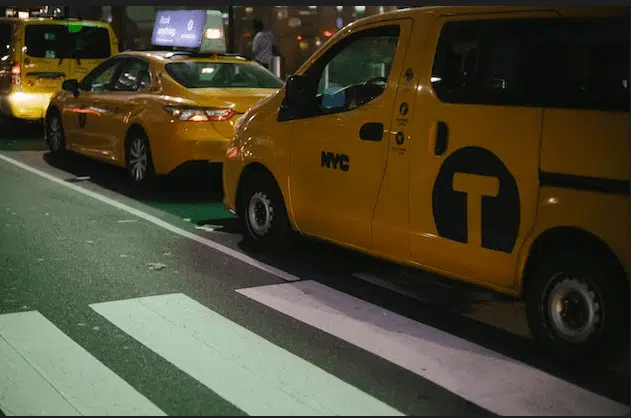Wheelchair Accessible Transportation in NYC
Posted in Senior Health Care Tips
New York City maintains a reputation as a great location for older adults to age in place because the tight density of city blocks mean amenities and services like grocery stores and medical offices are often just a few blocks away. While this proximity is a major convenience, longer journeys to medical specialists or other destinations can still prove challenging for adults who rely on wheelchairs, scooters, and other assistive devices.
Fortunately, New Yorkers using mobility devices have access to a variety of private and public services that allow for more convenient, safer travel.
MTA Accessible Subway Stations and Busses
The Metropolitan Transportation Authority (MTA) has made significant efforts into creating a more accessible public transportation system in recent years, however there are still significant coverage gaps in accessible subway stations (map), and many wheelchair-access elevators are notoriously unhygienic.
MTA busses are wheelchair accessible and drivers are required to assist wheelchair-bound bus passengers enter, secure themselves, and exit the bus. While the MTA bus network fills in many gaps in the subway system, performance varies significantly by line.
Pros: $2.90 per-ride fare is affordable, bus stops are frequent, so the last leg of a surface journey is typically short.
Cons: Can be very crowded during peak times, cannot guarantee door-to-door drop offs, cleanliness, reliability, travel time. 
Access-A-Ride
In addition to busses and trains, the MTA manages the Access-A-Ride (AAR) program, which allows registered users to request pickup in a specialty vehicle designed for wheelchair access for door-to-door trips at the same cost as a subway ride.
Taking advantage of Access-A-Ride requires registering with the MTA. This process involves scheduling a visit at an AAR assessment center, submitting a form, and receiving a medical assessment to verify your need (transportation can be required to and from this assessment). Once these steps are complete, the applicant will receive approval within 21 days.
An approved rider can request an AAR trip through the program’s app, telephone dispatch system, or booking website. A rider can also bring along a guest or caregiver provided they also pay the $2.90 fare and leave at the same destination.
The AAR system is the most cost-effective means of door-to-door transportation in the city, however the program is in very high demand, and failure to book a ride in advance can result in significant wait times.
Pros: Affordable door-to-door service, ability to bring a caregiver/guest, ability to schedule trips, 24/7 service.
Cons: Somewhat lengthy application process, significant wait times.
TLC Accessible Dispatch
The NYC Taxi and Limousine Commission has taken steps to increase their size of wheelchair accessible green and yellow taxis in recent years, as well as the ease in which these vehicles can be hailed and the training provided to cabbies using these vehicles.
In addition to flagging one down on the street, users can also call the TLC dispatch center at (646) 599-9999, use their online booking service, call 311, or download the Accessible Dispatch NYC app for Android or Apple phones.
The biggest perks of this service are that there is no sign-up requirement and unlike Access-A-Ride, it is a private vehicle with no additional stops to collect or drop off other passengers. Just keep in mind that as a NYC TLC cab, these rides are metered based on time and distance, so trips can get pricey quickly.
Pros: No sign up, one-stop trips, no limitation on passengers.
Cons: Metered trips make this more expensive than public services.
Accessible Private Livery Cabs
There are dozens of car services focused on wheelchair-bound clients operating within the city. These services vary in quality, reliability and price, however, the smaller nature of these businesses means you are more likely to encounter the same dispatcher and drivers.
Pros: Varies by company.
Cons: Varies by company.
Uber/Lyft Wheelchair Access Vehicle Programs
While yellow taxis are an NYC staple, rideshare apps like Lyft and Uber have provided more daily rides since January of 2017.
Both Lyft and Uber now offer Wheelchair accessibility options through their app in the NYC market, however these rides are exclusively meant for customers with non-folding wheelchairs and are subject to the same variances in price and availability as non-accessible rideshares.
Because rideshare fares are not fixed, pricing for trips can vary significantly based on current demand, driver availability, and weather, among other factors. As a general rule, rideshare trips are more expensive than TLC rides. These systems also tend to be more tech-heavy than city-managed services, requiring linking a credit card to a user profile and potentially communicating with the driver directly through text or phone calls.
Pros: On-demand scheduling, limited customer support through the app.
Cons: Expensive, requires more technological fluency from user, inconsistent pricing.
SelectCare hopes you found this information useful. We have helped older adults live happier, healthier lives for more than 37 years, providing a range of in-home care services (including travel assistance).
To learn more about SelectCare, our team, and how we can help you get where you are going, call today or request a free in-home care guide.
